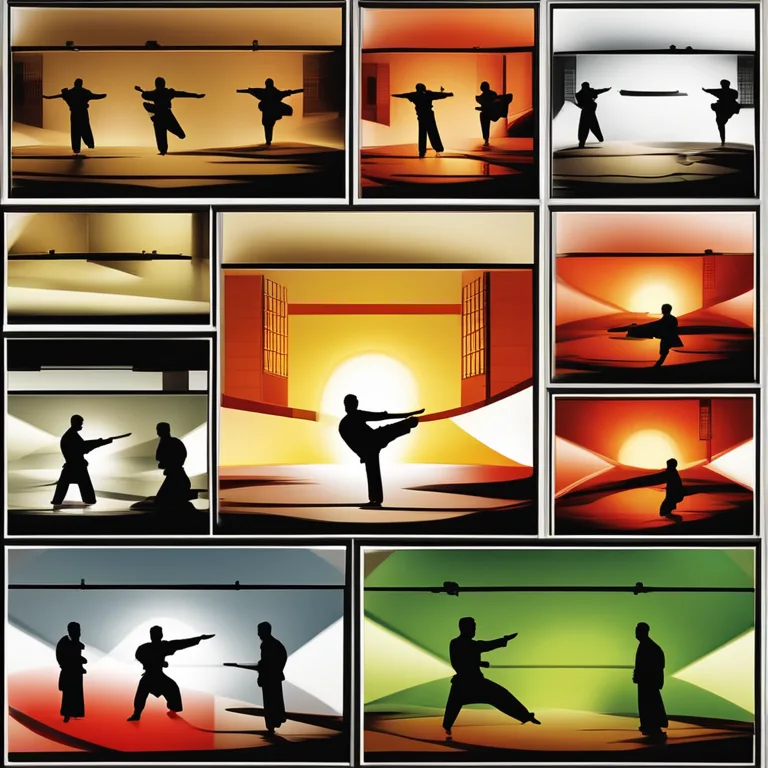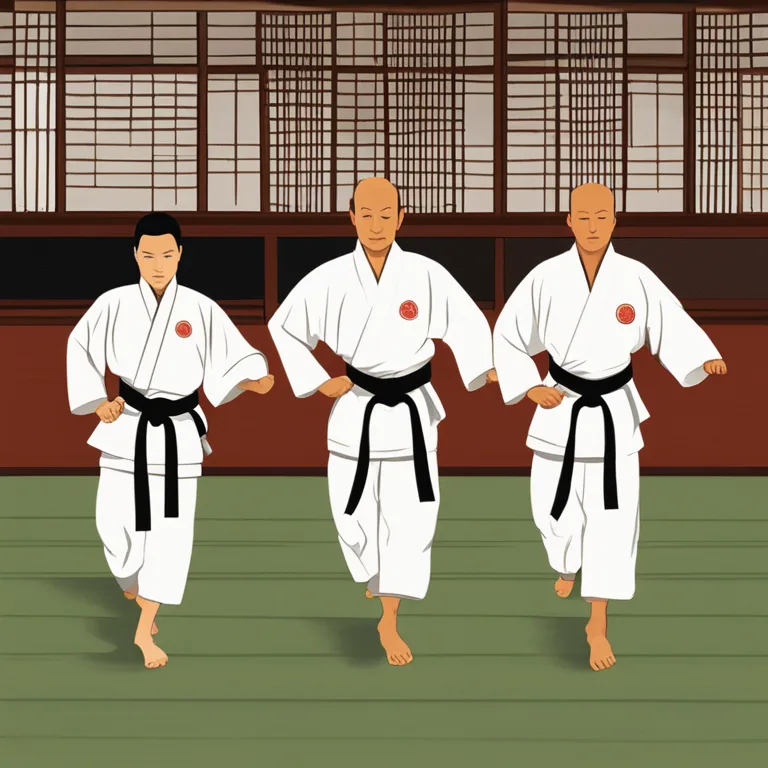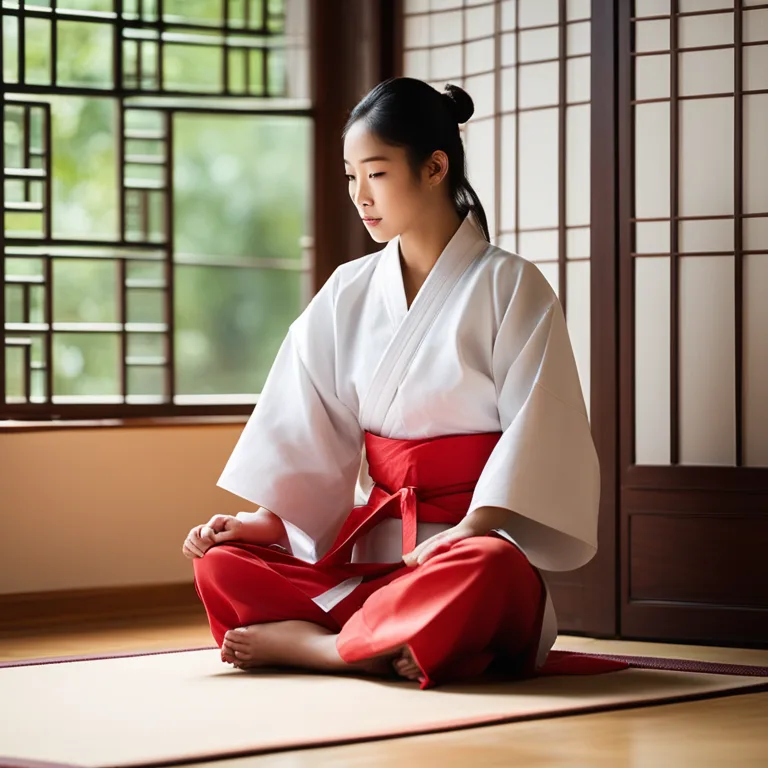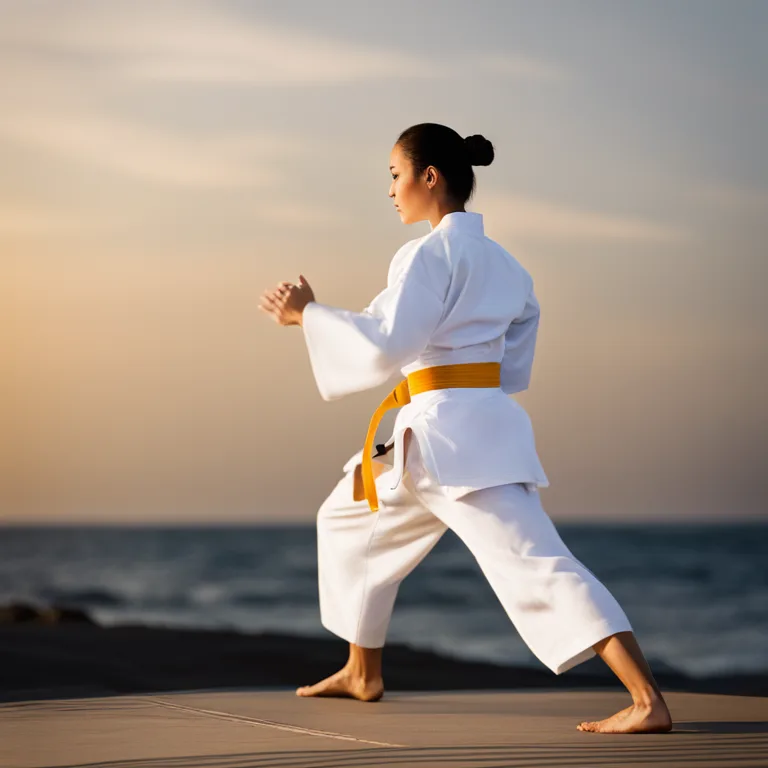
Karate Meditation Techniques
Discover the serenity and concentration benefits of karate meditation techniques in martial arts practices.
article by Hina Kurosawa
Origins of Meditation in Karate
Karate, known for its dynamic strikes and deft movements, also harbors quiet depths aimed at mental and spiritual refinement. Historically, the martial art stresses the importance of mental fortitude, a trait developed through meditation. With Okinawan roots that trace back to Buddhist and Taoist philosophies, traditional karate incorporates mindfulness to achieve a state of 'Mushin' or 'no mind', allowing practitioners to respond instinctively and harmoniously to adversaries. This blend of physical prowess and mental clarity cements karate not only as a form of self-defense but also as a journey toward inner peace and heightened awareness.

Integrating Meditation with Movement
Unlike static meditation practices, karate embeds mindfulness into kinetic action through 'Kata' – choreographed patterns of movements. A kata serves as a moving meditation, requiring attentiveness to breath, timing, and technique. Through repetitious practice, karateka (karate practitioners) learn to clear their minds, focus on the present moment, and cultivate a state of flow. This process, termed 'Zanshin' or a state of relaxed alertness, is fundamental in achieving mental and physical unity, an essential characteristic of masterful karate performance.

Mokuso: Calming the Mind Before Practice
Mokuso, translated as 'silent thought', is a technique commonly practiced at the beginning and end of karate sessions. Sitting on their heels in 'Seiza' position, practitioners close their eyes and breathe deeply, tuning into the rhythm of their breath and centering their thoughts. This preparatory meditation purges distractions, cultivates discipline, and primes the mind for the rigors of training. Mokuso's value extends beyond the dojo as it equips karateka with the calmness and clarity needed to confront everyday stressors.

Visualization Techniques in Karate
Visualization is a potent mental exercise within karate. Here, the karateka envisages themselves executing techniques with precision and power, confronting an imaginary opponent. Aided by controlled breathing, visualization can enhance focus, improve technique, and prepare the mind for actual combat scenarios. This technique not only enhances the understanding of movements but also establishes a deeper connection between mind and body – a cornerstone philosophy in martial arts.

Meditative Breathing During Kihon
During 'Kihon', or the practice of basic techniques, meditative breathing plays a crucial role. Each punch, block, and kick is synchronized with deliberate inhales and exhales, encouraging a meditative state that heightens precision and control. The concept of 'Kokyu' or breath power is ingrained in karate philosophy, reinforcing the link between controlled breathing and the unleashing of latent physical power. Consistent practice of Kihon with meditative breathing is key to evolving into a skilled and mindful karate practitioner.
Applications Beyond the Dojo
The meditative practices of karate transcend the bounds of martial training. The focus and tranquility developed through these techniques can be applied to various aspects of life such as work, study, and personal relationships. Karate meditation teaches the adaptability of mind, enhances emotional regulation, and nurtures a proactive approach to challenges. By integrating these meditation techniques into daily routines, individuals can harness the clarity and balance inherent in the centuries-old art of karate.
Published: 12/20/2023
Modified: 12/20/2023
More predictions
Come back here soon to learn more about yourself and your future


Sport life: Meditation Techniques for Athletes
Learn how meditation can enhance athletic performance, improve focus, and accelerate recovery. Discover key techniques tailored for the physical demands of athletes.


Pregnancy Meditation Techniques
Discover serene and effective meditation techniques tailored for expectant mothers to enhance prenatal wellbeing and connect with their unborn child.


Meditation Techniques & Anxiety
Discover effective meditation practices to soothe anxiety and foster a sense of peace in your daily life.